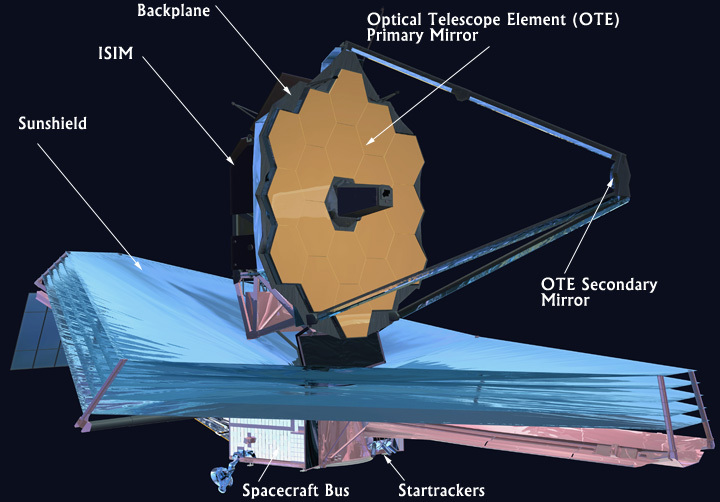Enterprise Architecture Must Evolve for Digital Transformation
On the road to innovation, it’s not uncommon for fundamental architectures—the guiding frameworks and standards—to be modernized in order to enable continued progress.
Take for instance the telescope. We’ll skip over optics and light theory and jump to the function that prompted a telescope’s architectural framework. People wanted to be able to see “faraway things as though nearby” (AIP). Working with the available technology they created a framework, which included optic lenses and a cylindrical tube. That was more than 400 years ago.
While early telescopes were confined to something people could physically peer through, scientists realized that with new technology capable of transmitting images over waves and launching things outside of Earth’s atmosphere, the architectural framework should be updated. This eventually enabled the development of the Hubble telescope. It still called for lenses and a cylindrical tube, but the framework no longer required it to be physically within reach—telescopes could be mobile and operated from afar—allowing for continued innovations.
By contrast, today’s enterprise architecture has not been modernized; it’s like we’re working with the initial outline of the telescope. By circumventing this important evolution organizations create more friction down the line. Why? Because it’s generally harder to alter the foundation when it’s already holding up a three-story home (not to mix metaphors). The digital transformation journey businesses are on is also a continuous road of innovation, and no one wants to arrive at a dead end then be forced to back track, but that’s what digital businesses can expect if they don’t modernize their enterprise architecture.
Outdated Frameworks Impede Innovation
Current enterprise architectures (EAs) were being developed in the 1980s and while there’s been iterations on them since, widely adopted EAs are still utilizing the same architectural foundations as when they were established. Take for example The Open Group Architecture Framework (TOGAF), which had its first version published in 1995. The foundation still consists of the same four architectural domains: Business, Application, Data, and Technical.
That foundation was laid before the internet existed. And this is, in fact, part of the problem. Today it is not uncommon to equate technology with the world-wide connection that is so ingrained into our everyday lives. While TOGAF has managed to support businesses up to today by versioning, including integrating the internet and new capabilities into its architecture, it wasn’t purpose-built for today’s possibilities—digital business. Our understanding of what’s possible drives the need for modernizing enterprise architecture.
Modernize for Mobility
As technological advances create new possibilities the enterprise architecture needs to adapt to new constraints—or lack thereof—to sustain continued innovation. Advancements like Wi-Fi and 5G have changed the landscape. Computer applications can leave the data center and users are no longer static, they’re mobile. The pressure has been building for a modern architectural framework intentionally designed to account for these and other advances. Without this modernized enterprise architecture innovation will stagnate, hindering the transformation businesses need to truly launch themselves into the digital space.
Protecting What’s Possible
In 2022 the US and collaborating countries completed and launched into space a new telescope, the James Webb Space Telescope (JWST). It was designed using a modernized architecture. With an updated understanding of what’s possible—including the ability to detect and “see” infrared light instead of just visible light, the ability to transmit images back to earth from over one million miles away, and more—scientists believed there could be greater functions and capabilities of telescopes. With these increased possibilities came new challenges and therefore the architectural framework was yet again reimagined.
The James Webb Space Telescope still utilizes lenses and needs to collect light through a path, but instead of requiring a cylindrical tube to focus the incoming light, the architecture evolved for its new purpose—to collect the increased range of light that is infrared waves. This new purpose also presented a unique challenge. Everything above absolute zero registers as infrared light, so it was essential to mitigate interference from heat sources like the sun. The result was a modernized architectural framework to serve the evolved needs, which included the sunshield, spacecraft bus, optical telescope elements (OTE), and an Integrated Science Instrument Module (ISIM).

Figure 1 James Webb Space Telescope (NASA)
Similarly, while modernized EAs must be purpose-built to support new capabilities available to organizations following the establishment of the internet, they must also address emerging challenges. For example, mobility threatens security and ubiquitous access and connection increases users and demand on the resources. These are just some of the points of friction introduced in the path to digital business by the traditional architecture domains, indicating a need for new domains and concepts in the framework to remove that friction, like security, automation, and digital services.
Like the evolution and modernization of the telescope, we have increased capabilities with today’s technology as compared to 30 years ago. The hardware is smaller, the communication languages are streamlined, in general science has advanced providing for even more innovation. And for businesses, this means the ability to connect with their customers in a new way—digitally. But the enterprise architecture on which they build needs to be purposefully designed with today’s understanding of what’s possible. We wouldn’t imagine trying to restrict today’s astronomical study to a tool we can hold in our hands, so why would we restrict our businesses to an architectural framework developed before the internet, mobile computing, and cybersecurity?
To learn how to modernize architecture in order to serve a digital business, take a look at “Form Follows Function,” the first chapter by Lori MacVittie in our new O’Reilly book, Enterprise Architecture for Digital Business.
